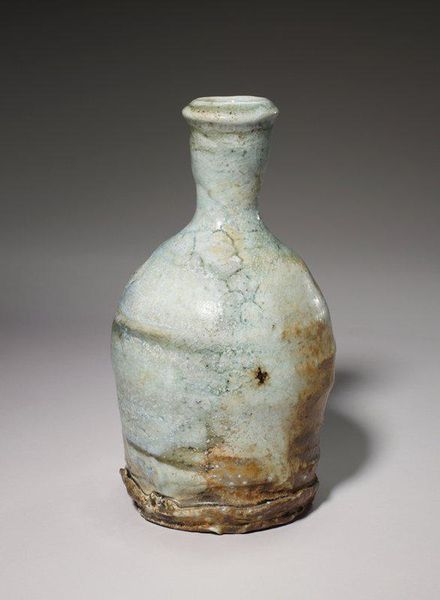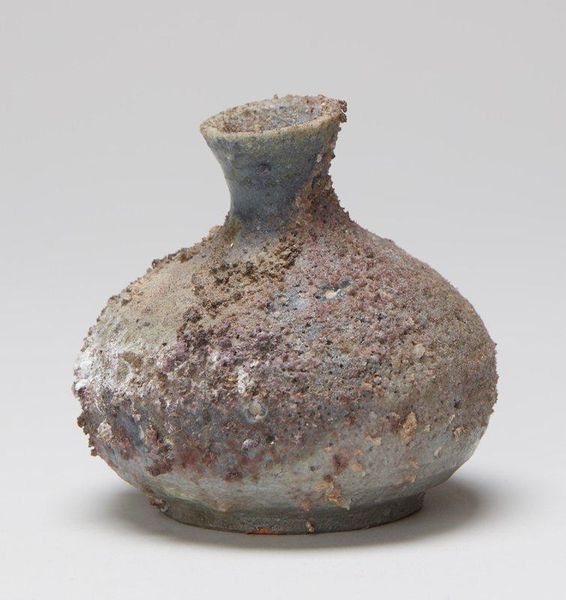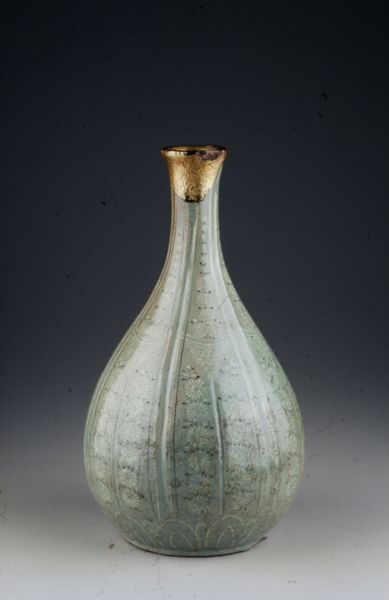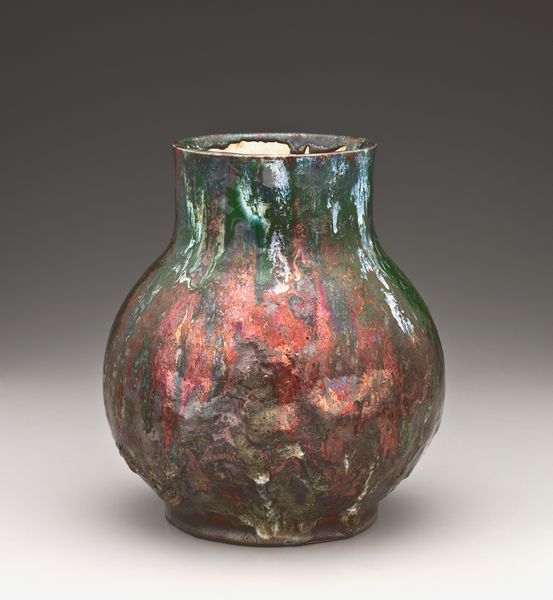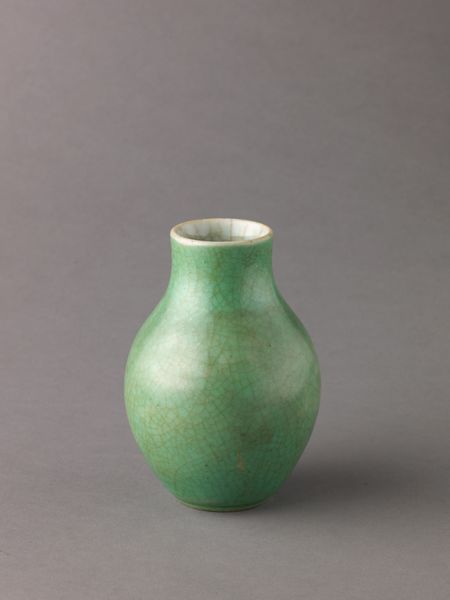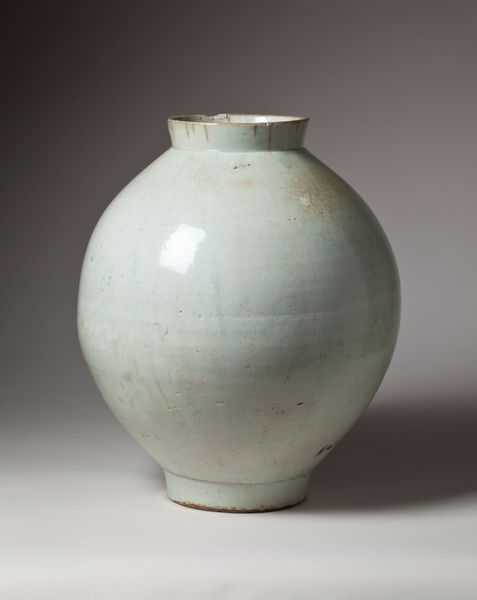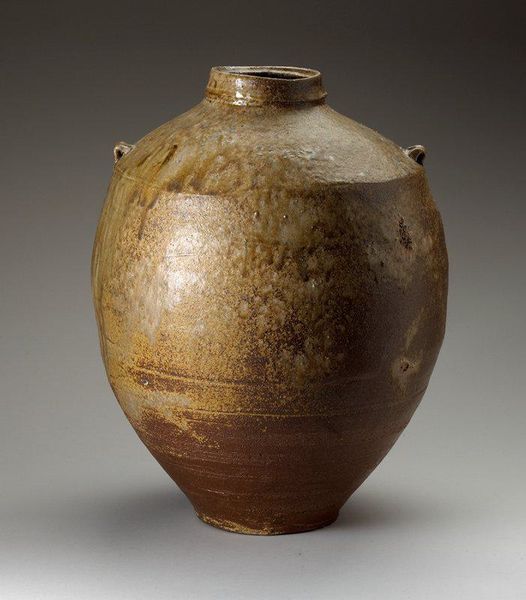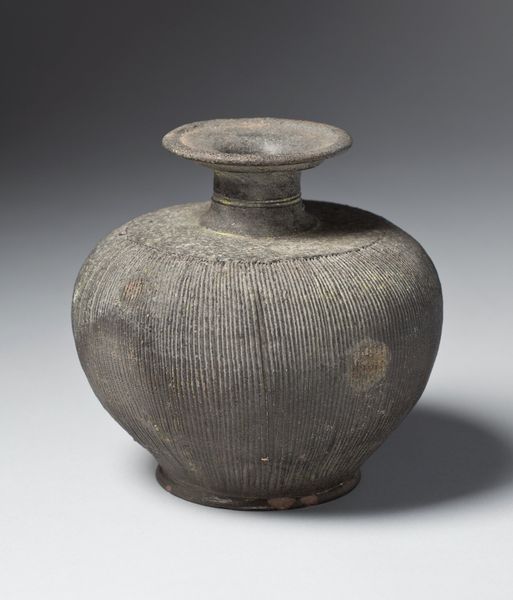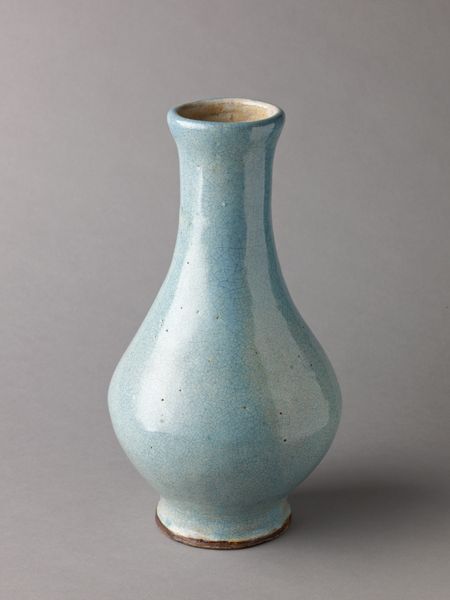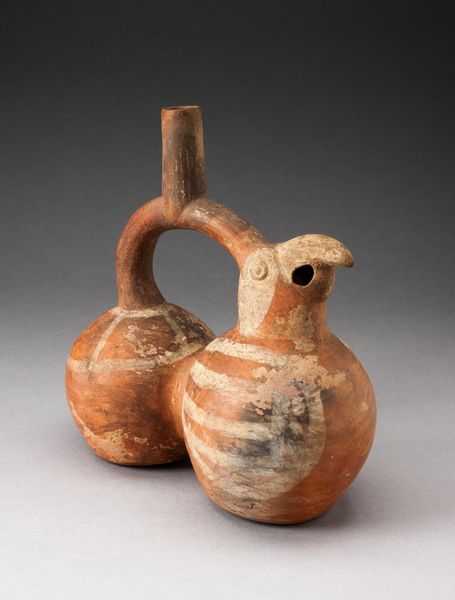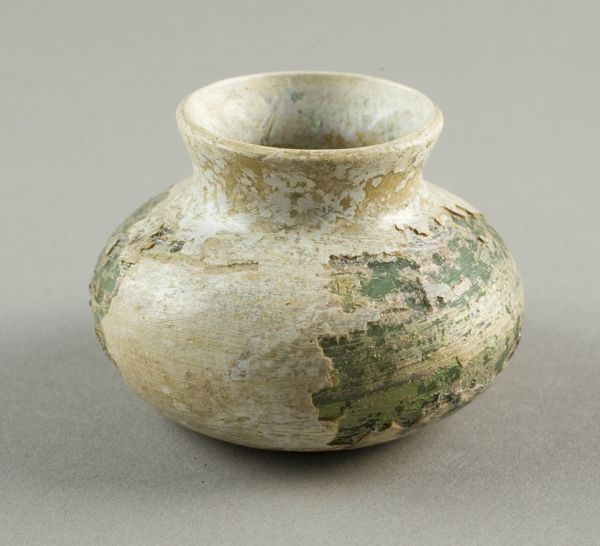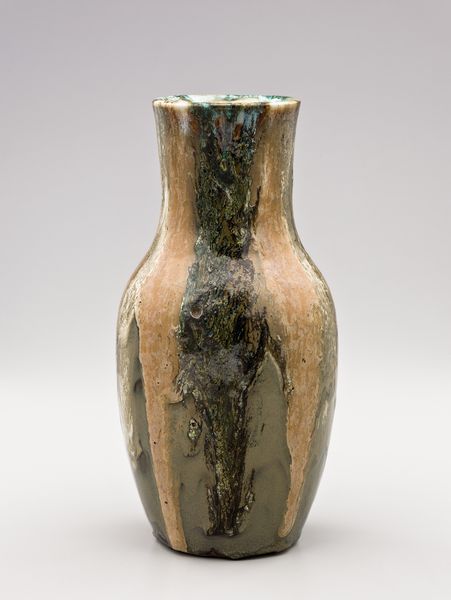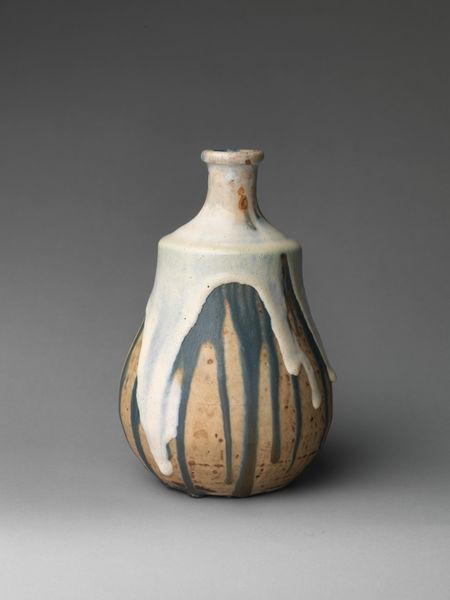
ceramic, earthenware
#
asian-art
#
ceramic
#
japan
#
abstract
#
earthenware
#
stoneware
#
ceramic
Dimensions: 2 7/8 × 3 7/16 × 3 1/2 in. (7.3 × 8.73 × 8.89 cm)
Copyright: No Known Copyright
Curator: Here in gallery 312, we're exhibiting a 'Shino sake cup,' a ceramic work by Kumano Kurōemon, crafted around the early 21st century. Editor: It looks surprisingly ancient. It’s humble, wabi-sabi aesthetic feels really strong. You can practically feel the potter’s hands in those subtle imperfections. Curator: Indeed. Shino ware, particularly sake cups, gained prominence through tea ceremonies and sake consumption. Often tied to specific social practices and elevated as emblems of cultural status. Editor: Its cultural weight is tangible. Is the rough texture, where the clay peeks through the glaze, deliberately left unfinished? I wonder how such design affects the accessibility for those often excluded from such curated traditions and ceremonies. Curator: Precisely. The contrast between the glazed and unglazed surfaces highlights the material's inherent qualities. But even more telling is the work the studio, family, and the economic considerations each has required. Kurōemon comes from a long and successful linage of Shino makers. Editor: Absolutely. That connection gives this modest sake cup a voice that speaks volumes about our complex relationship with history, material, and the artifice that divides luxury from our necessities. Curator: How right you are. The act of enjoying sake, traditionally steeped in ritual and formality, becomes an entry point for reflection. Editor: For me, engaging with a craft so entrenched in cultural value demands questioning what the price of exclusivity really is, while still understanding the immense talent involved in crafting such a sublime form. Curator: A compelling point, and precisely what objects like this provoke, a confluence of culture, economics and status with the visceral beauty of this Shino cup's earthenware, challenging our perspectives on art’s role in social equity and how its function and utility can intersect in today’s complicated market system. Editor: I completely agree. Thinking about what this seemingly simple object can mean in someone's experience is a useful exercise, because it holds stories beyond its mere use.
Comments
minneapolisinstituteofart almost 2 years ago
⋮
Living as a recluse in rural Japan, Kumano Kurōemon is nicknamed the Bear of Echizen for both his visual appearance and the energetic, strong ceramics he creates. Echizen (today’s Fukui Prefecture) is an ancient pottery center known for its high-fired stoneware, a tradition that Kumano continues but at the same time moves into a new direction through producing surprisingly large works with fantastic encrustations of glaze.
Join the conversation
Join millions of artists and users on Artera today and experience the ultimate creative platform.
